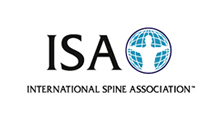
Spine Disorders
|
WHEN TO SEE A SPINE
SPECIALIST You should
seek the advice of a spine specialist if neck or back pain persists for more
than two weeks or if it is progressive in intensity and/or distribution. You
should seek immediate healthcare attention if neck or back pain occurs as the
result of an injury or if it is associated with serious illness and/or a high
fever. Additional signs and symptoms which warrant prompt medical attention
include:
SCREEENING AND DIAGNOSIS Plain X-ray
assessment may reveal displacement of a vertebral body with reference to the
vertebral body below on a lateral or side view X-ray. The best diagnostic
imaging tool is computerized tomography (CT). Thin slice CT with 3-D
reconstruction (reformatting) is very good at detecting both the presence and
the cause of spondylolithesis. MRI can be effectively used to assess associated
or complicating findings such as a disc herniation, spinal stenosis, bone
marrow abnormalities and to rule out a hematoma (pool of blood) which would be
suggestive of a traumatic cause. A nuclear bone scan may be used to help
determine whether there was a recent bone injury or fracture. Conditions
which may mimic the symptoms associated with spondylolisthesis include:
PATHOLOGY The most
common cause is felt to be the result of a combination of weakened bone and
repetitive trauma during the stages of development. There are conditions, which
are known to increase the risk for acquiring spondylolisthesis such as surgery
and degenerative disorders of the spine.
Individuals who participate in aggressive sports at a young age are more
likely to develop this condition. Examples sports include gymnastics, weightlifting,
rugby and football. Conditions, which may contribute to the development of
spondylolisthesis, include spondylolysis, degenerative changes, tumor
infection, post-operative destabilization and neuropathic arthropathy. NATURAL HISTORY AND
PROGNOSIS Risk of
progression varies form 5-30 % Progressive
spondylolisthesis occurs during skeletal development May
progressive in degree of movement (translation) |
















